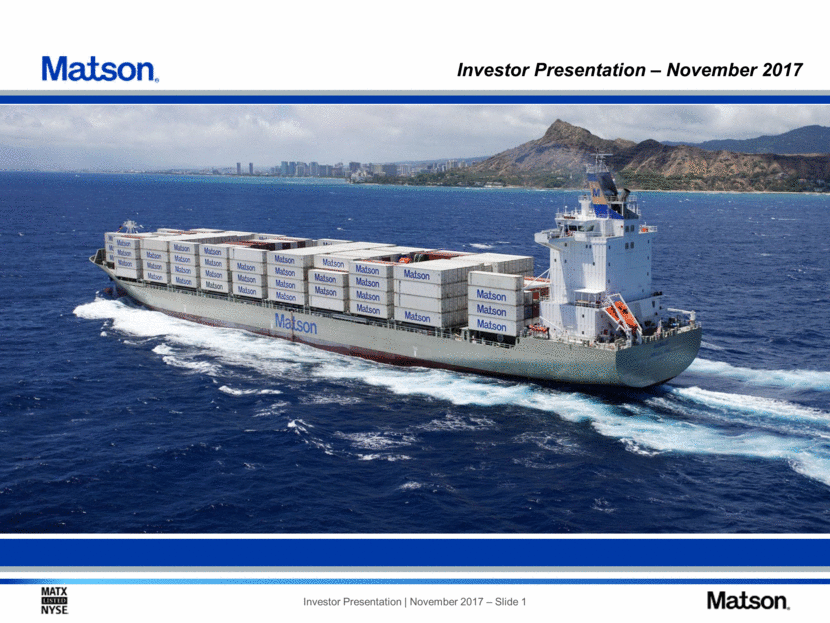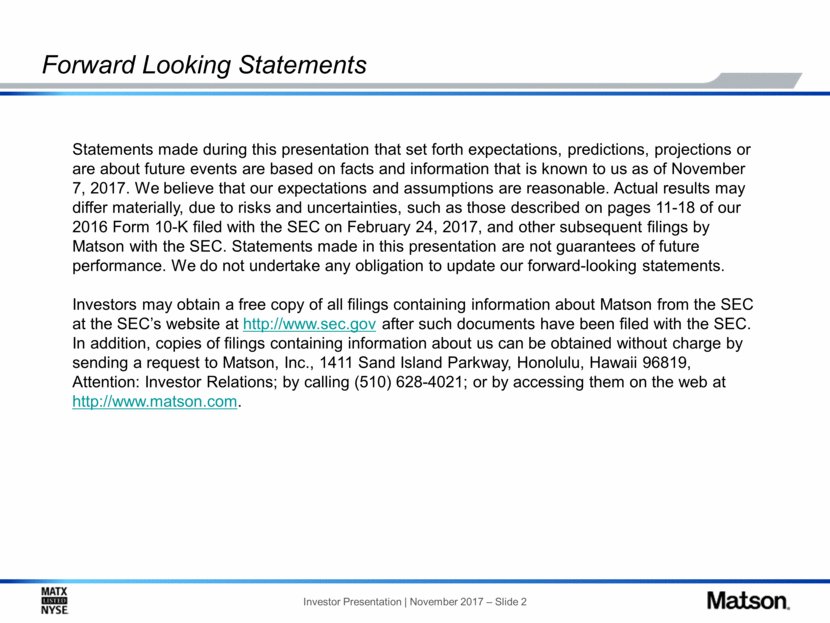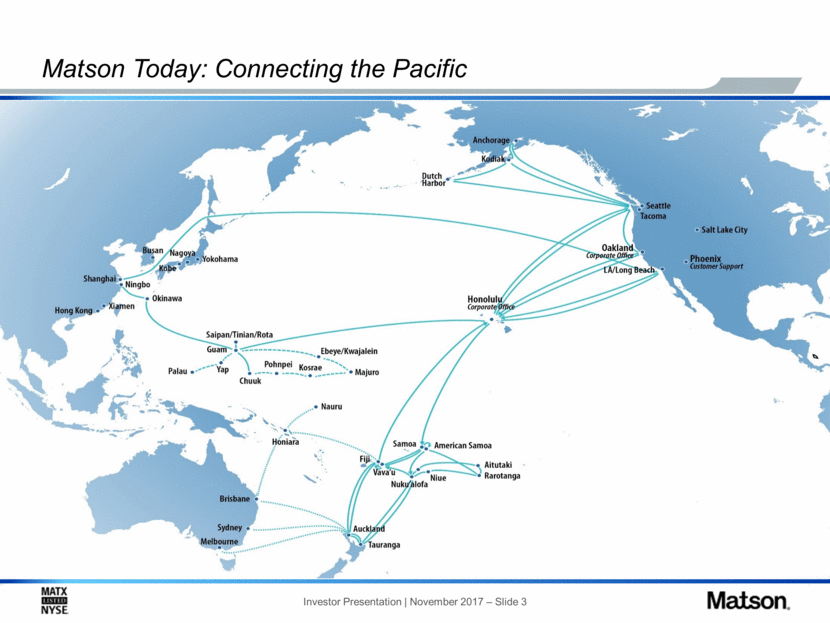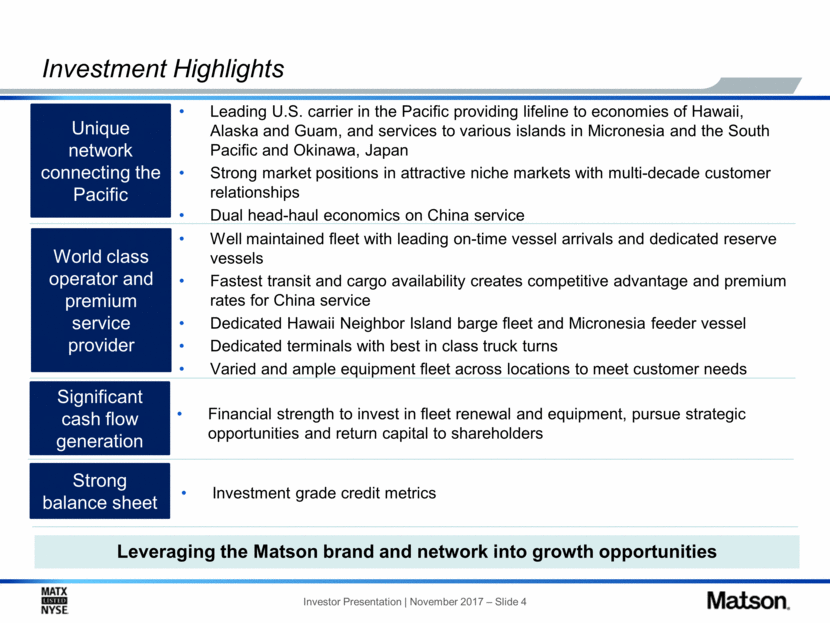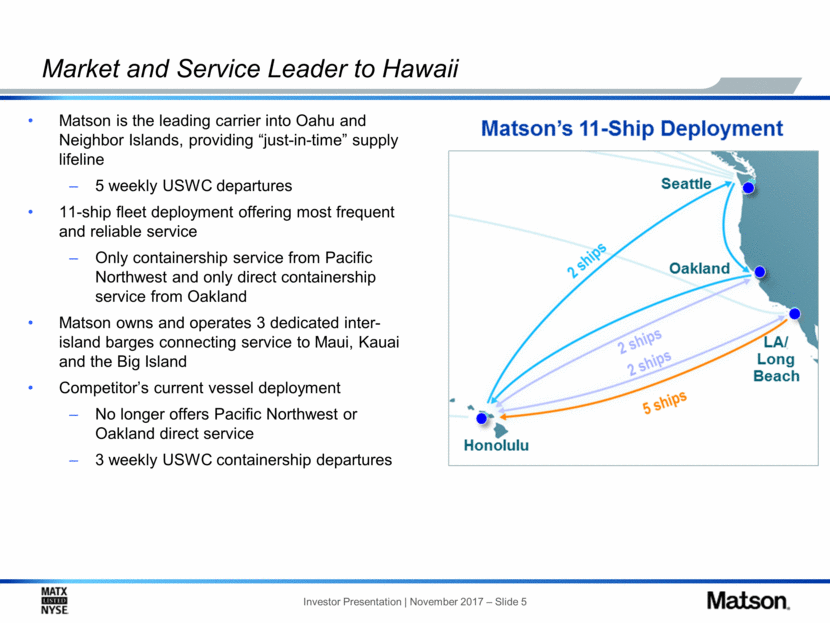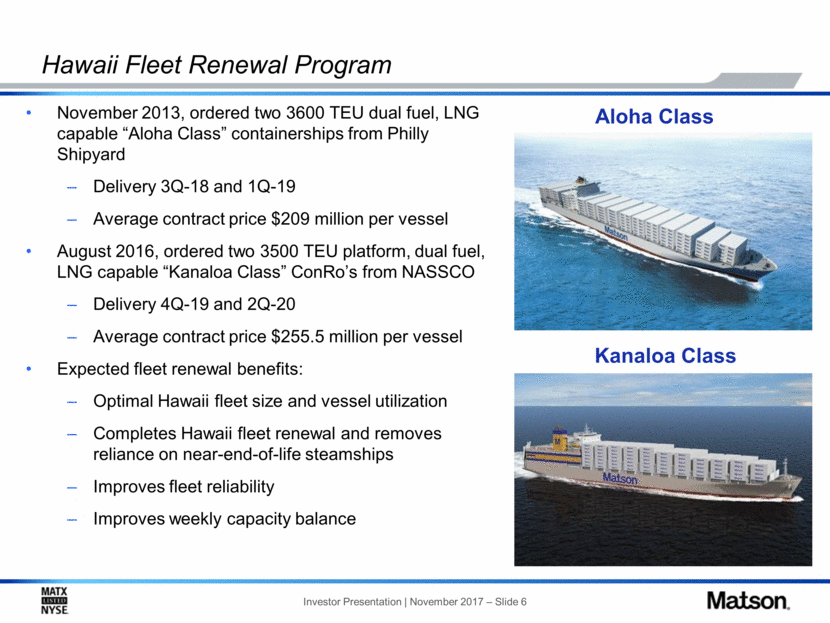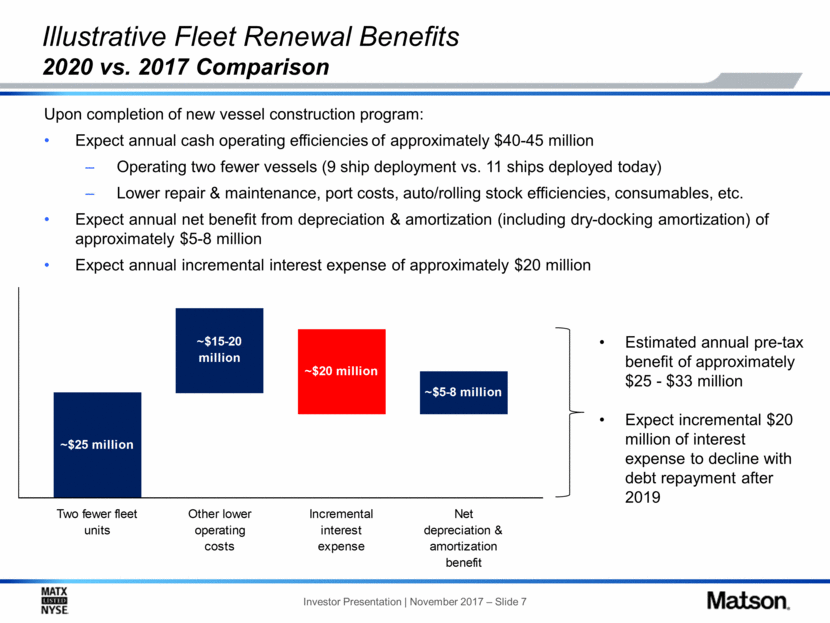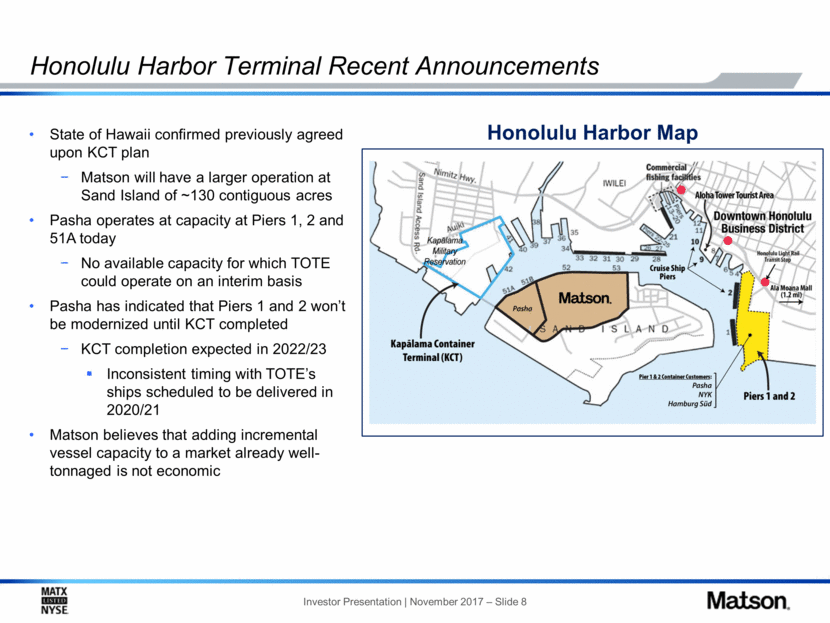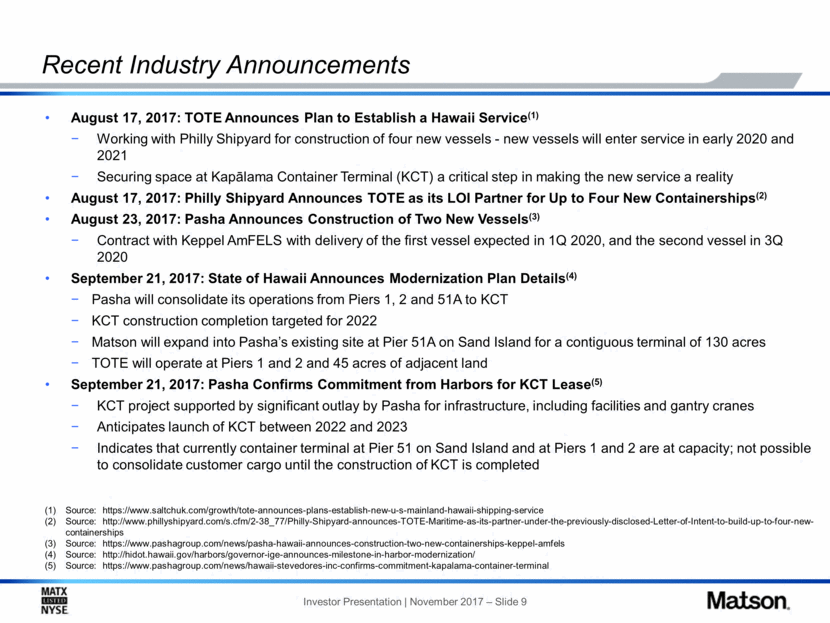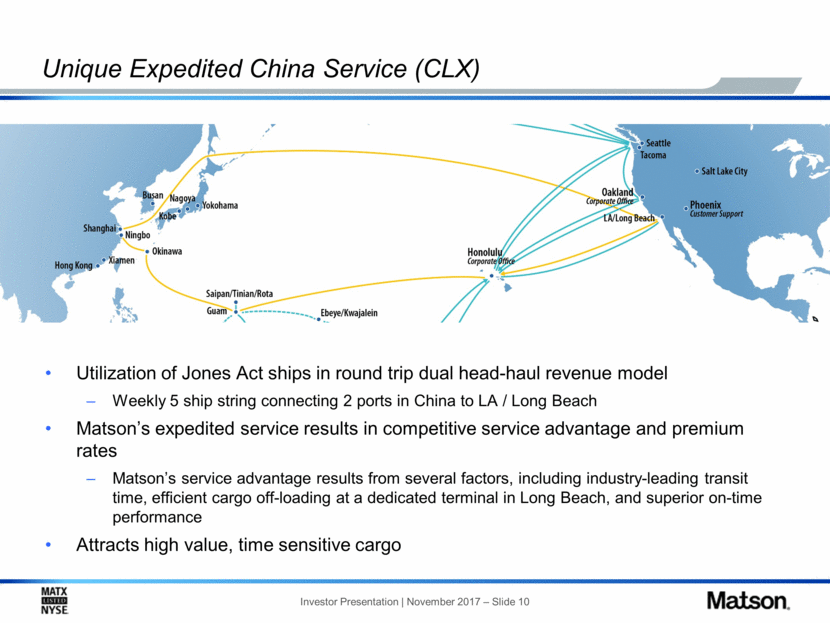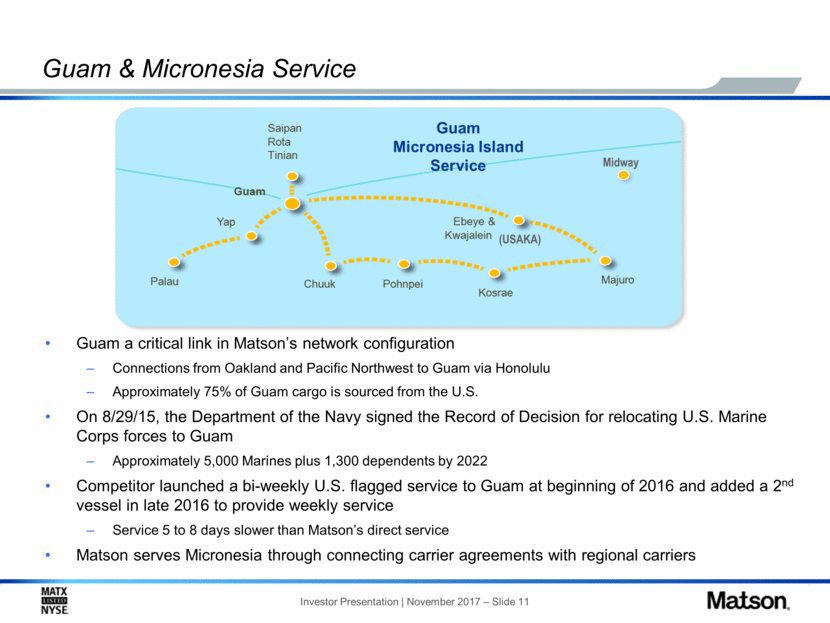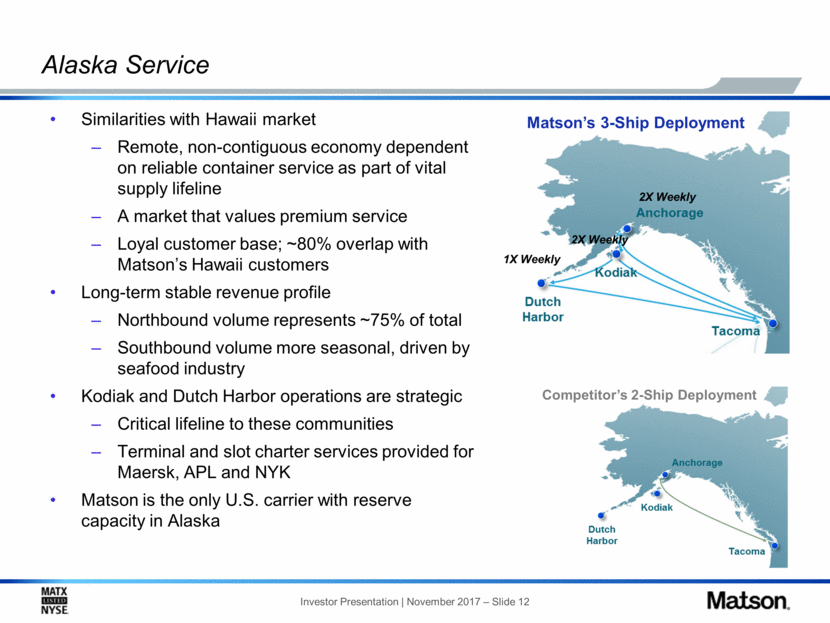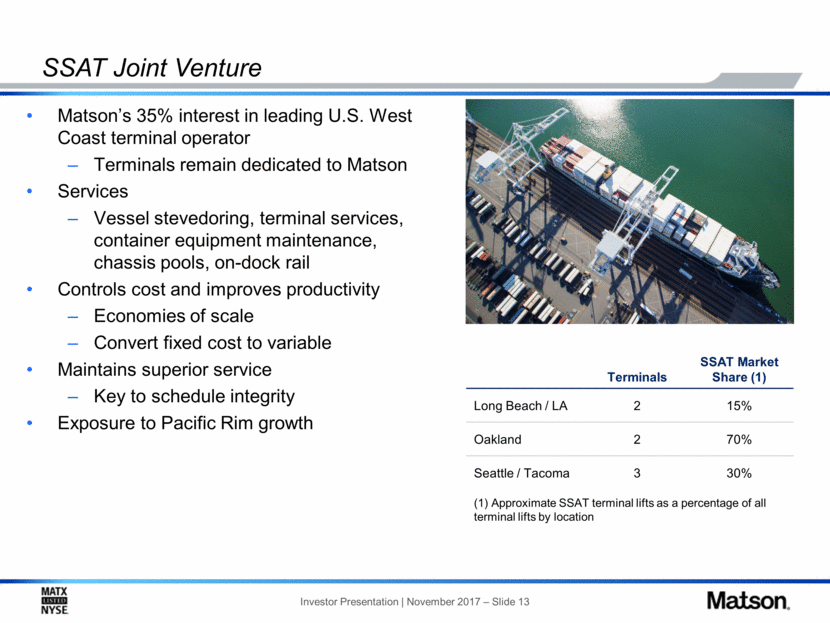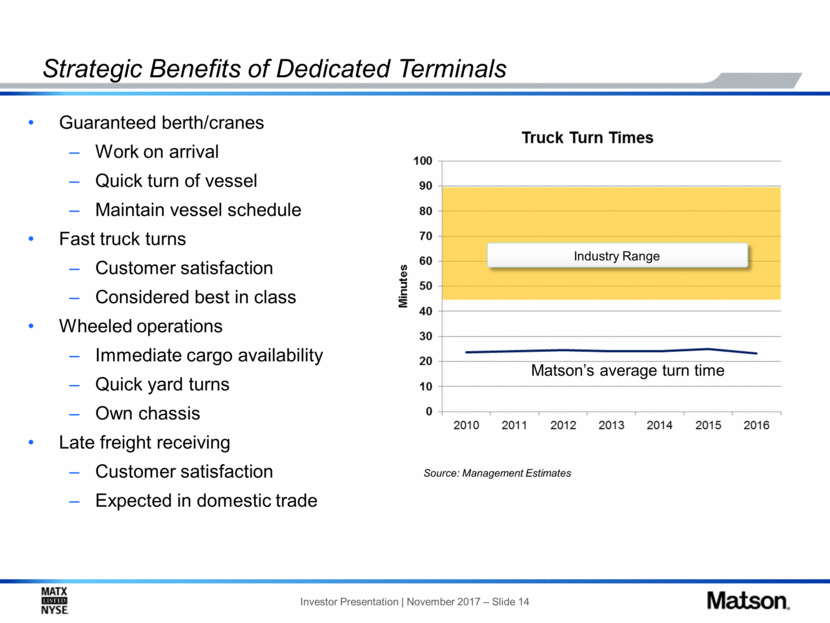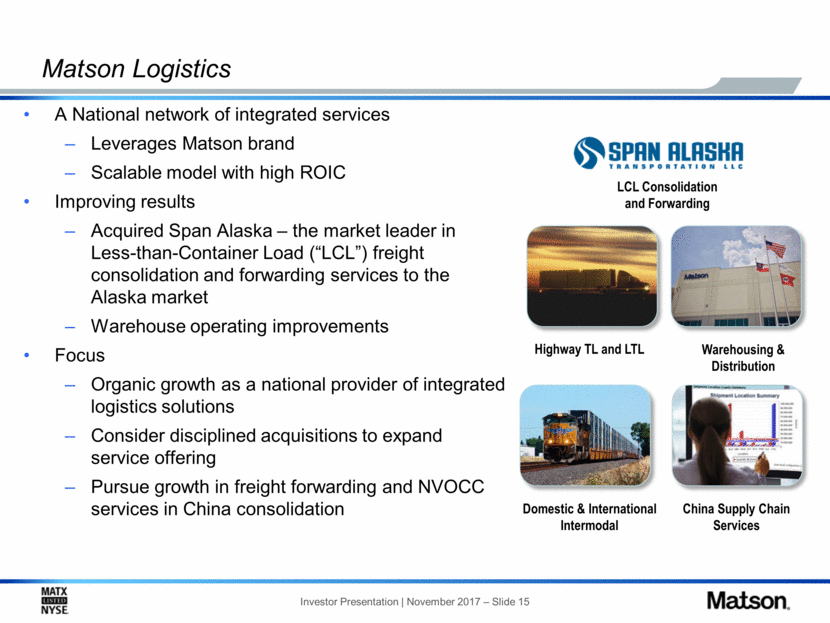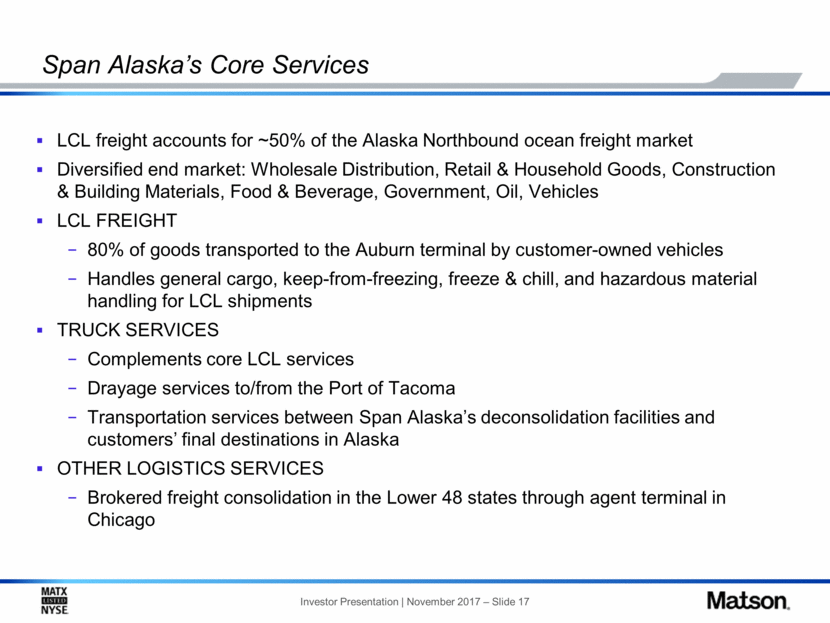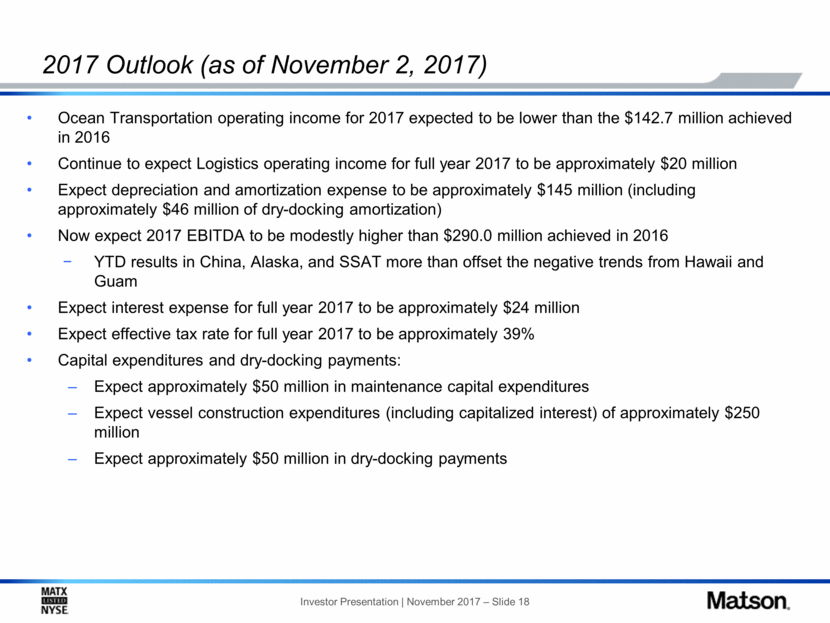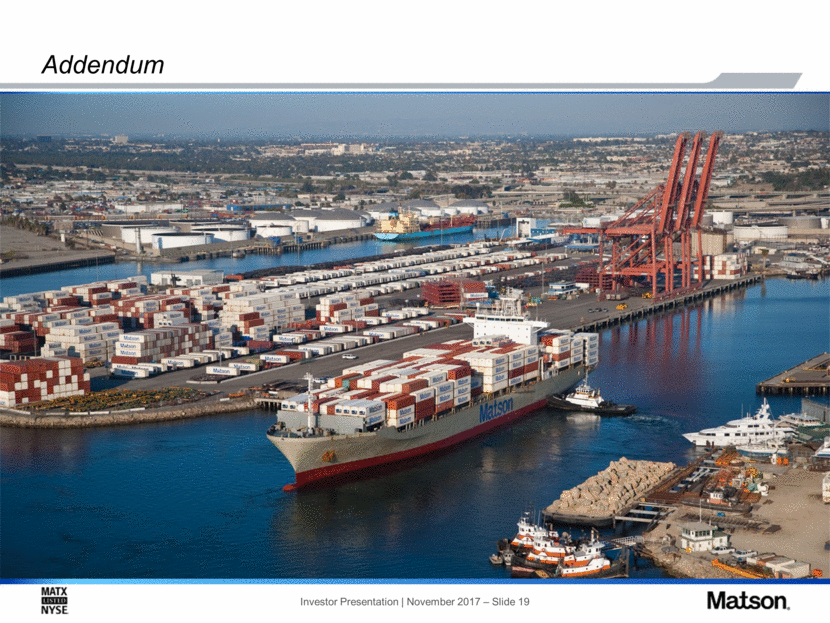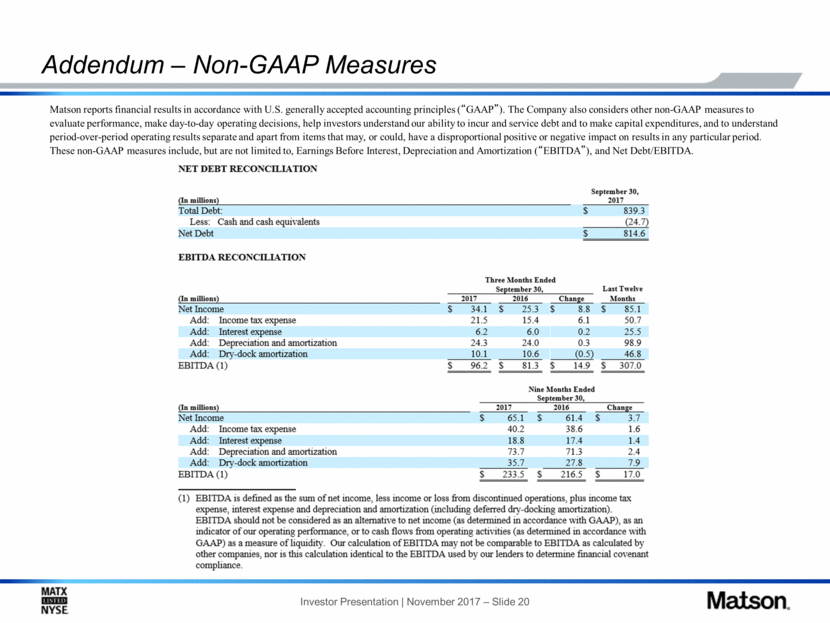
| Addendum – Non-GAAP Measures Matson reports financial results in accordance with U.S. generally accepted accounting principles (“GAAP”). The Company also considers other non-GAAP measures to evaluate performance, make day-to-day operating decisions, help investors understand our ability to incur and service debt and to make capital expenditures, and to understand period-over-period operating results separate and apart from items that may, or could, have a disproportional positive or negative impact on results in any particular period. These non-GAAP measures include, but are not limited to, Earnings Before Interest, Depreciation and Amortization (“EBITDA”), and Net Debt/EBITDA. NET DEBT RECONCILIATION (In millions) September 30, 2017 Total Debt: $ 839.3 Less: Cash and cash equivalents (24.7) Net Debt $ 814.6 EBITDA RECONCILIATION (In millions) Net Income Three Months Ended September 30, 2017 2016 Change Last Twelve Months $ 34.1 $ 25.3 $ 8.8 $ 85.1 Add: Income tax expense 21.5 15.4 6.1 50.7 Add: Interest expense 6.2 6.0 0.2 25.5 Add: Depreciation and amortization 24.3 24.0 0.3 98.9 Add: Dry-dock amortization 10.1 10.6 (0.5) 46.8 EBITDA(1) $ 96.2 $ 81.3 $ 14.9 $ 307.0 (In millions) 2017 2016 Change None Months Ended September 30, Net Income $ 65.1 $ 61.4 $ 3.7 Add: Income tax expense 40.2 38.6 1.6 Add: Interest expense 18.8 17.4 1.4 Add: Depreciation and amortization 73.7 71.3 2.4 Add: Dry-dock amortization 35.7 27.8 7.9 EBITDA (1) $ 233.5 $ 216.5 $ 17.0 (1) EBITDA is defined as the sum of net income, less income or loss from discontinued operations, plus income tax expense, interest expense and depreciation and amortization (including deferred dry-docking amortization). EBITDA should not be considered as an alternative to net income (as determined in accordance with GAAP), as an indicator of our operating performance, or to cash flows from operating activities (as determined in accordance with GAAP) as a measure of liquidity. Our calculation of EBITDA may not be comparable to EBITDA as calculated by other companies, nor is this calculation identical to the EBITDA used by our lenders to determine financial covenant compliance. |
